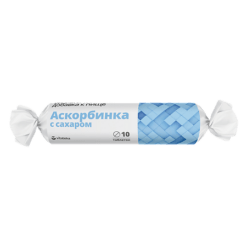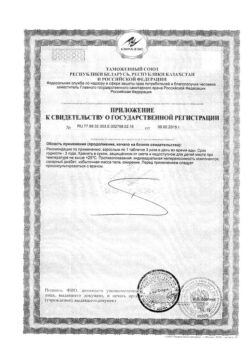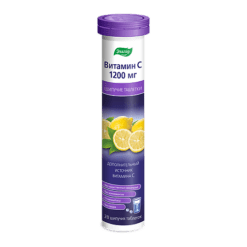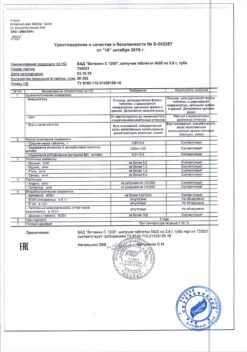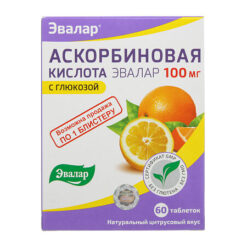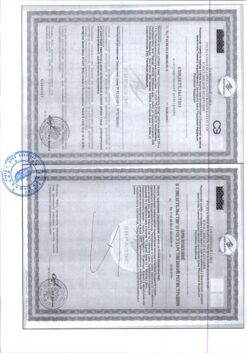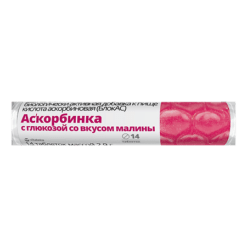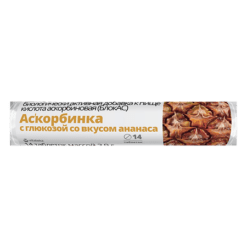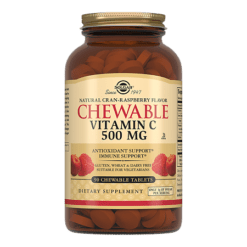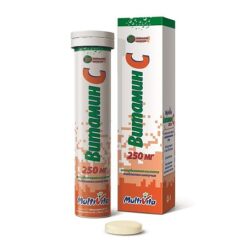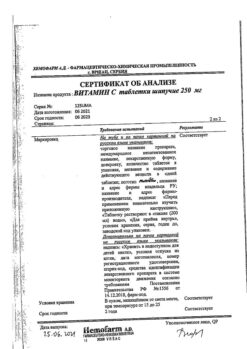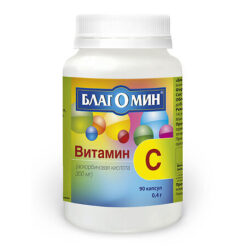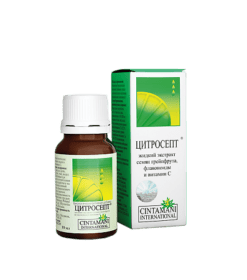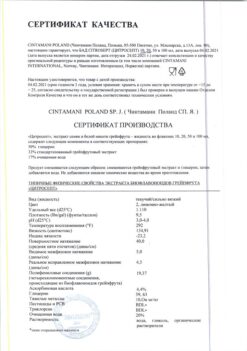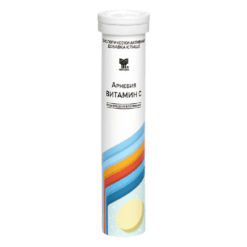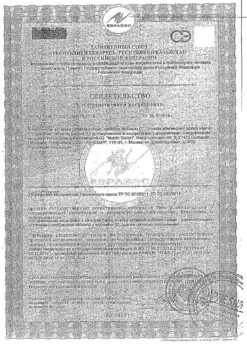No products in the cart.
Ascorbic acid with glucose tablets 100 mg, 10 pcs
€1.00
Out of stock
(E-mail when Stock is available)
Description
Pharmacotherapeutic group: vitamin.
ATC code: A11GA01
Pharmacological properties
Pharmacodynamics
Ascorbic acid (vitamin C) is not formed in the human body, and comes only with food.
Pharmacological effects: in quantities significantly greater than the daily requirement (90 mg) has almost no effect, except for the rapid relief of symptoms of hypo- and avitaminosis (scurvy).
Physiological functions: is a cofactor of some hydroxylation and amidation reactions – transfers electrons to enzymes, providing them with a reducing equivalent. It participates in reactions of hydroxylation of proline and lysine residues of procollagen to form hydroxyproline and hydroxylysine (poststratal modification of collagen), oxidation of lysine side chains in proteins to form hydroxytrimethyllysine (in the synthesis of cartinite), oxidation of folic acid to folic acid, metabolism of drugs in liver microsomes and hydroxylation of dopamine to form noradrenaline. Increases the activity of amidifying enzymes involved in the processing of oxytocin, antidiuretic hormone and cholestycystokinin. Participates in steroidogenesis in the adrenal glands.
Reduces trivalent iron ions to divalent iron ions in the intestine, promoting its absorption. Its main role in tissues is participation in the synthesis of collagen, proteoglycans and other organic components of intercellular substance of teeth, bones and endothelium of intercellular capillaries. In low doses (150-250 mg/day orally) it improves complexing function of deferoxamine in chronic intoxication with iron preparations that causes increase of iron excretion.
Pharmacokinetics
Absorbed in gastro-intestinal tract (mainly in jejunum). With increasing dose up to 200 mg it is absorbed up to 140 mg (70%); with further increasing dose absorption decreases (50-20%). The binding to plasma proteins is 25%. Diseases of the gastrointestinal tract (gastric and 12 duodenal ulcers, constipation or diarrhea, worm infestation, giardiasis), the use of fresh fruit and vegetable juices, alkaline drinking reduce absorption of ascorbic acid in the intestine. The normal plasma concentration of ascorbic acid is approximately 10-20 mcg/ml, and the body stores about 1.5 g when taking the daily recommended doses and 2.5 g when taking 200 mg/day. Time to reach maximum concentration (TCmax) after oral administration – 4 h.
Easily penetrates into leukocytes, platelets and then into all tissues; the highest concentration is reached in glandular organs, leukocytes, liver and eye lens; penetrates through the placenta. The concentration of ascorbic acid in leukocytes and platelets is higher than in erythrocytes and plasma. In deficient states the concentration in leukocytes decreases later and more slowly and is considered a better criterion for assessing deficiency than the concentration in plasma.
Metabolized mainly in the liver to deoxyascorbic acid and then to oxalic acid and ascorbate-2-sulfate.
It is excreted unchanged by kidneys through the intestines, with sweat, breast milk and as metabolites.
In high doses the excretion rate increases dramatically. Smoking and use of ethanol accelerate the destruction of ascorbic acid (conversion to inactive metabolites), sharply reducing the reserves in the body.
Excreted by hemodialysis.
Indications
Indications
Composition
Composition
How to take, the dosage
How to take, the dosage
Interaction
Interaction
Enhances blood concentrations of benzylpenicillin and tetracyclines; at a dose of 1 g / day increases the bioavailability of ethinylestradiol (including those included in oral contraceptives). Improves intestinal absorption of iron preparations (converts trivalent iron to divalent iron); may increase iron excretion if used concomitantly with deferoxamine.
Acetylsalicylic acid (ASA), oral contraceptives, fresh juices and alkaline drinking reduce absorption and absorption. When concomitant use with ASA, urinary excretion of ascorbic acid is increased and excretion of ASA is reduced. ASA reduces absorption of ascorbic acid by about 30%. Increases the risk of crystalluria during treatment with salicylates and short-acting sulfonamides, slows renal excretion of acids, increases excretion of drugs that are alkaline (including alkaloids), reduces the blood concentration of oral contraceptives. Increases the total clearance of ethanol, which in turn reduces the concentration of ascorbic acid in the body. Quinoline drugs (fluoroquinolones, etc.), calcium chloride, salicylates, glucocorticosteroids deplete ascorbic acid during long-term use. In concomitant use reduces chronotropic effect of isoprenaline. Long-term use or use in high doses may interfere with the interaction of disulfiram and ethanol. In high doses increases renal excretion of mexiletine.
Barbiturates and primidone increase excretion of ascorbic acid in the urine. Reduces the therapeutic effect of antipsychotic drugs (phenothiazine derivatives), tubal reabsorption of amphetamine and tricyclic antidepressants.
Decreases the effectiveness of heparin and indirect anticoagulants.
Special Instructions
Special Instructions
Contraindications
Contraindications
Overdose
Overdose
Additional information
| Manufacturer | Kvadrat-C, Russia |
|---|---|
| Brand | Kvadrat-C |
Other forms…
Related products
Buy Ascorbic acid with glucose tablets 100 mg, 10 pcs with delivery to USA, UK, Europe and over 120 other countries.


